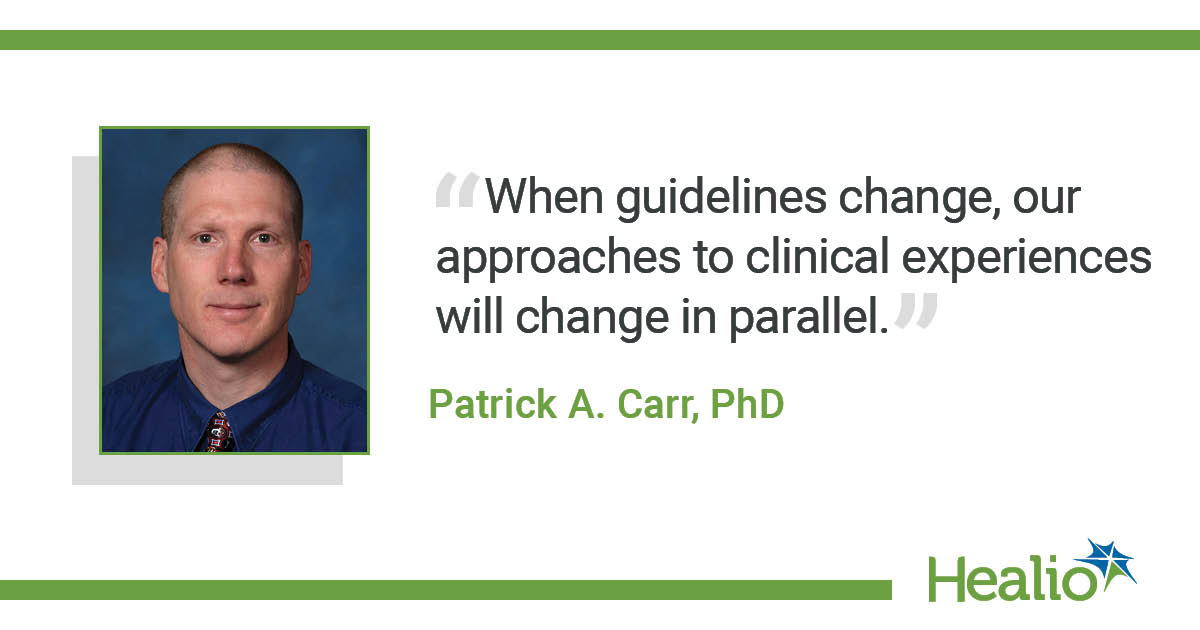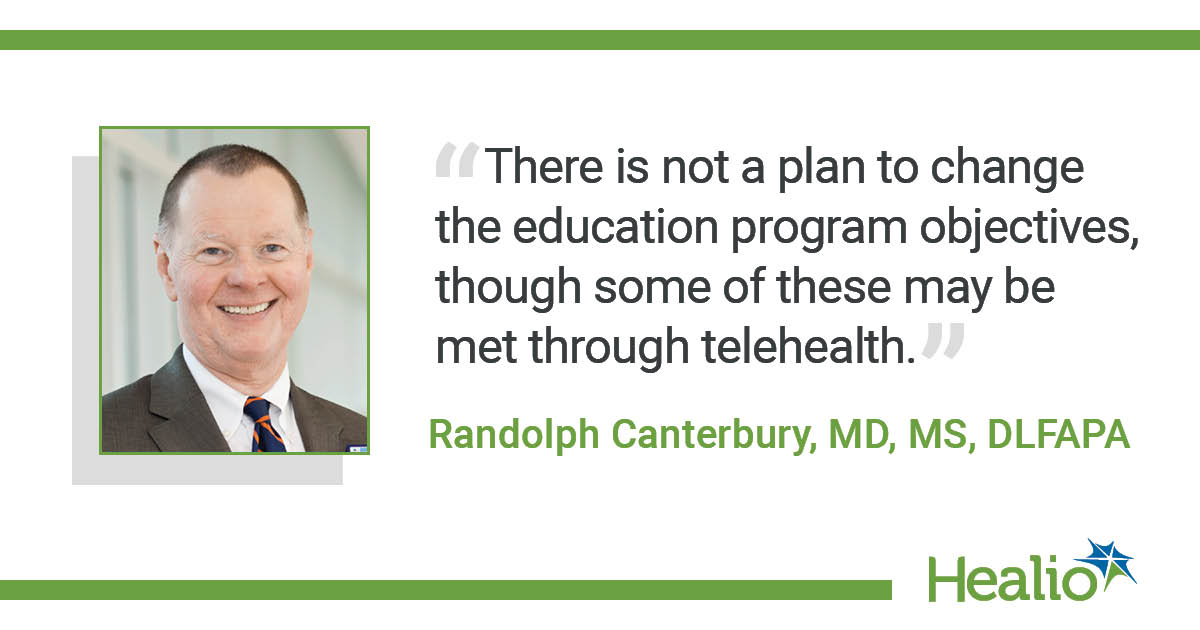Medical schools adapt to COVID-19 pandemic
In the midst of the COVID-19 pandemic, nearly every aspect of life in the United States has had to adapt to social distancing recommendations and stay-at-home orders to prevent the spread of the virus — including medical education.
The AMA previously released a guidance to help schools and health care systems integrate medical students into clinical care during the COVID-19 pandemic, which included information on how to approach clinical rotations, personal protective equipment (PPE) and COVID-19 testing.
Healio Primary Care spoke with Randolph Canterbury, MD, MS, DLFAPA, the senior associate dean for education at the University of Virginia School of Medicine, and Patrick A. Carr, PhD, assistant dean for medical curriculum at the University of North Dakota’s School of Medicine and Health Sciences, to learn more about how institutions are adapting to the COVID-19 pandemic.
Clinical experience
In its guidance, the AMA recommends that institutions accommodate students who are unable to participate in clinical coursework. It also calls for an assessment of clinical environments that students will enter to determine their safety and ability to educate, including their burden of COVID-19 exposure, care protocol and role clarity, patient diversity to meet learning goals and the capacity of faculty to supervise, teach and provide feedback to students.

“Once the clinical learning environment returns to a more stable situation with usual types of patients and low numbers of COVID-19 patients, we will reintroduce medical students into the clinical environment for their required clinical experiences,” Canterbury said.
However, he noted that allowing students to engage in clinical experience again “will be predicated on adequate coronavirus testing, PPE for students, and also ensuring that medical students are not involved directly in the care of patients known or suspected of having COVID-19.”
Carr noted that students at his institution are following federal, state, local and institutional rules and are not expected to complete “in-person clinical experience” at this moment.
“We are a leader in telehealth and simulation, so we have attempted to provide alternative opportunities for students,” Carr said. “When guidelines change, our approaches to clinical experiences will change in parallel.”
Graduation requirements, curriculum
At the University of Virginia School of Medicine, Canterbury said that graduation requirements are being reevaluated to ensure that students can complete education program objectives “through experiences that are safe and doable for our students.”
He noted that these objectives do require in-person, direct patient care.
“There is not a plan to change the education program objectives, though some of these may be met through telehealth,” he continued.
Carr noted that his school “continually re-evaluates all aspects of our program.”
Although he does not anticipate changes to the program’s graduation requirements because of the pandemic but does expect “implementation of efficiencies in how those requirements are satisfied.”
“It is essential that we recognize there is always room to improve and there will always be new challenges, large and small, that must be overcome,” Carr said.

Many institutions, including Harvard Medical School, have allowed final-year medical students to graduate early to help ease the strain on the health care system caused by the pandemic.
New resources for medical students
Recently, the AMA announced that it would be offering new online resources for both undergraduate and graduate medical students to ensure that they can continue remote learning during the COVID-19 pandemic.
These resources include 13 modules for undergraduates and six modules for graduate medical students.
“The American Medical Association is unwavering in its commitment to ensuring the physician workforce — both present and future — is equipped with the skills and education necessary to meet our nation’s rapidly changing health care needs,” Patrice A. Harris, MD, MA, AMA president, said in a press release. “The COVID-19 pandemic severely disrupted medical education for students, residents and educators, and the AMA is working to fill gaps by offering free access to content, tools and resources that will ensure a well-trained physician workforce of the future.”
The new resources were created with the goal of helping medical schools and residency programs adjust to the changes the pandemic has made to long-standing clinical and education practices and will be free through September 2020. – by Erin Michael
References:
AMA. AMA guiding principles to protect learners responding to COVID-19. https://www.ama-assn.org/delivering-care/public-health/ama-guiding-principles-protect-learners-responding-covid-19. Accessed May 5, 2020.
AMA. AMA offers free resources for medical students, residents & educators. https://www.ama-assn.org/press-center/press-releases/ama-offers-free-resources-medical-students-residents-educators. Accessed May 5, 2020.
Disclosures: Canterbury and Carr report no relevant financial disclosures.

